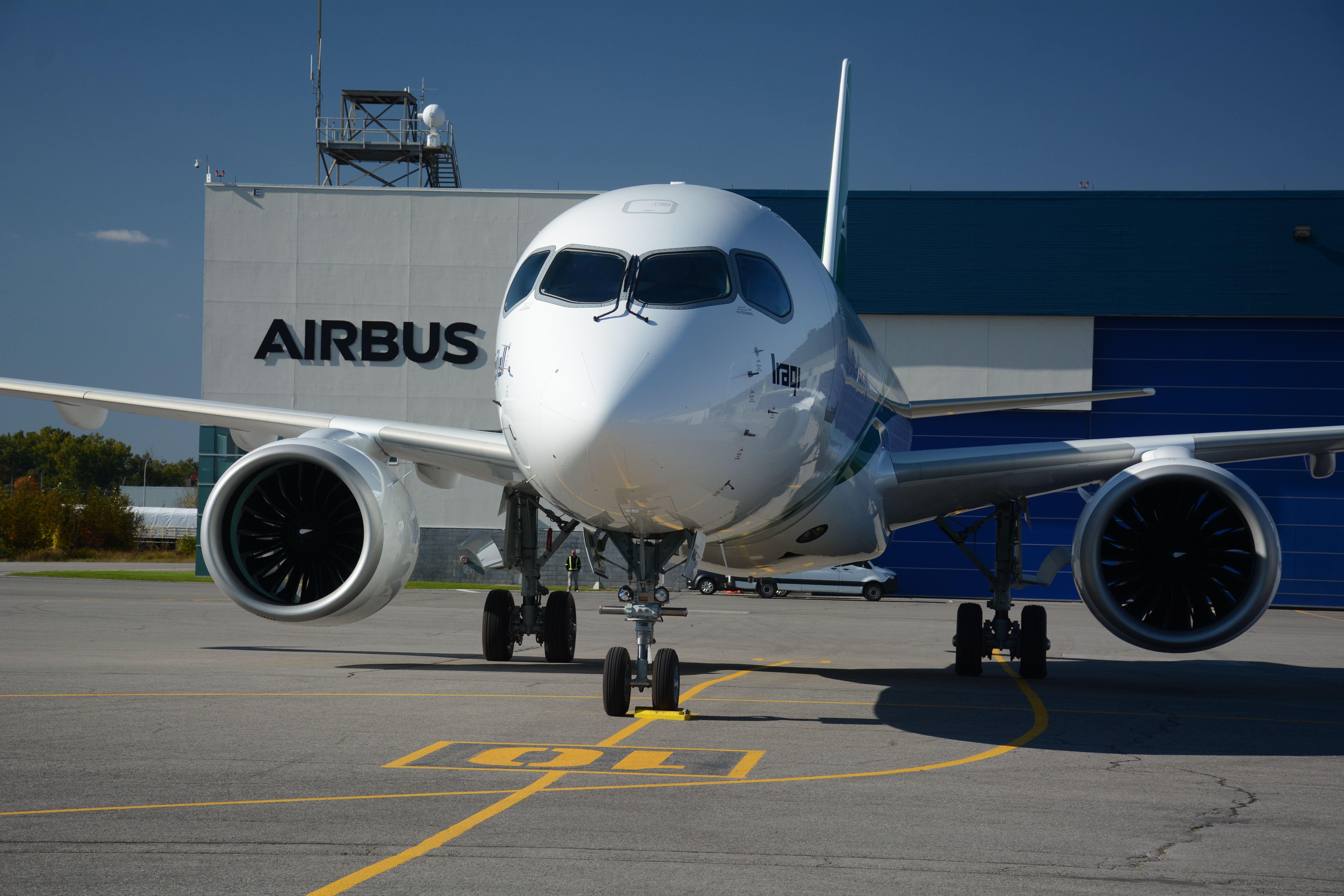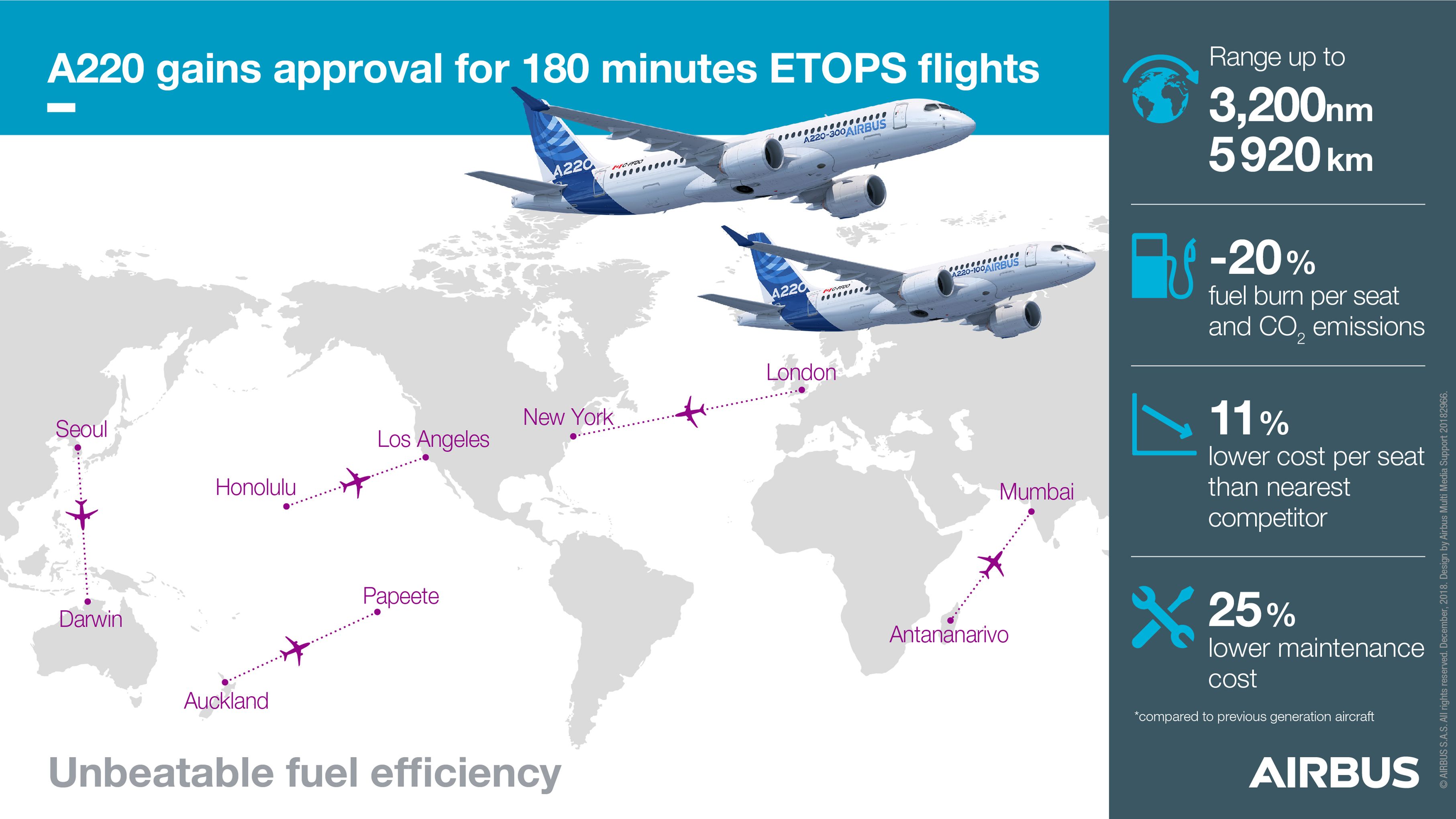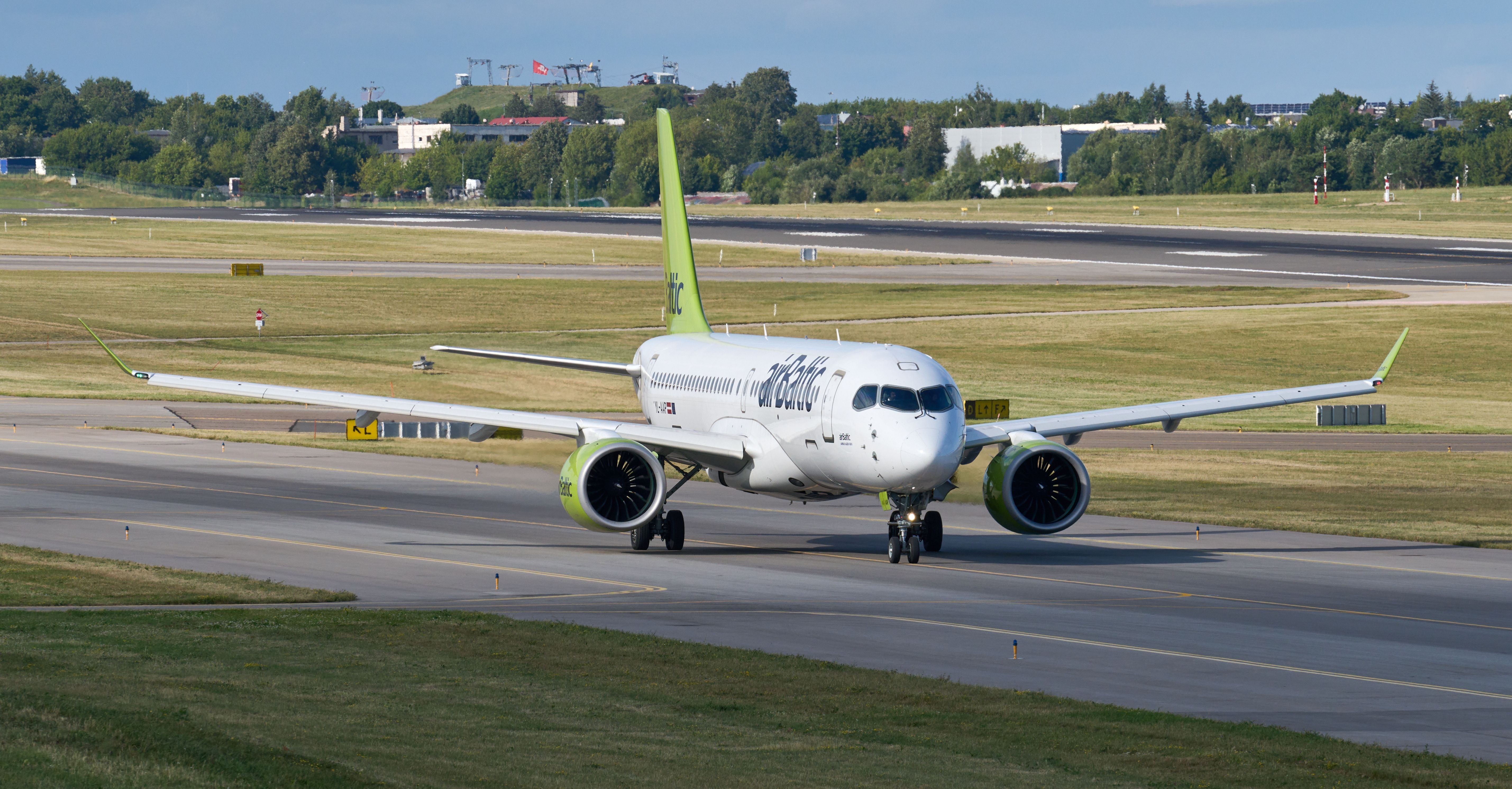The Airbus A220 has quickly emerged as the golden child of the narrowbody family, undertaking regional, short-, medium-, and even some nearly long-haul routes. However, could the plane take on one of the busiest long-haul crossings: across the Atlantic?
It could, but would it?
Since the A220 received its ETOPS certification in 2019, it has been possible to make the trip from London to New York or back. Subsequent improvements to MTOW have only improved the aircraft's range, making the trip possible with fewer restrictions, and currently, the larger A220-300 can fly up to 3,550nm (6,575km). Trips from further within Europe, where major operators like SWISS are located, would be pushing the aircraft, but not completely impossible.
With range available, the question is would any airline actually undertake this endeavor? Would passengers be happy flying the smaller aircraft for around 7-8 hours? While a smaller aircraft might seem ideal in terms of operating costs, it comes at the expense of passenger and cargo capacity, hurting revenues substantially. Let's look at the feasibility first.
How far is too far?
Currently, the A220's longest route by distance is a 4,745km flight from Tampere, Finland, to Tenerife South in the Canary Islands. Taking just over seven hours, this is closing into long-haul territory and is clearly a feasible route. But most of the narrowbody's longest routes are serving one region, bar airBaltic's route to Dubai, which takes a whopping 7 hours and 30 minutes (but is only 4,500km).
If, for instance, JetBlue did indeed launch transatlantic flights using the A220, perhaps from its base at New York JFK to one of the London airports, it would measure to 5,550kms. This would be longest flight for the narrowbody, beating out the aforementioned service by almost 800kms. Considering the speed of the A220, it would likely take over eight hours as well.
Inevitably, this route would face payload restrictions to account for weather conditions and diversions. While the A220's range is sufficient, in operating conditions, airlines would have to carry more fuel and less cargo, meaning fewer passengers or bags. With a capacity of 120 to 150 passengers, this would be hard to pull off.
But never say never. The Boeing 737 MAX is busy making transatlantic trips daily, as is the Airbus A321LR, both in tight 3-3 configurations in economy. The 2-3 layout on the A220 is a bit more comfortable and passengers might enjoy this over the usual 3-3. However, the larger aircraft benefit from better range and capacity, providing better trip economics for airlines.
Too much competiton
Since the A220 became popular, rumors of an extended range versions have been flying around, named the A220-500. While Airbus has not confirmed anything, this stretched version of the small jet would seat up to 170 passengers. However, range wouldn't be the priority, capacity would. Therefore, a transatlantic trip is ruled out.
In reality, Airbus would avoid creating an aircraft to compete with the workhorse A320 family and the upcoming A321XLR. There might be an upstart carriers hoping to capitalize on the A220 with rock-bottom fares, but don't expect to flying to the East Coast on a major name carrier any time soon.
What do you think about a transatlantic trip on the A220? Let us know in the comments.



